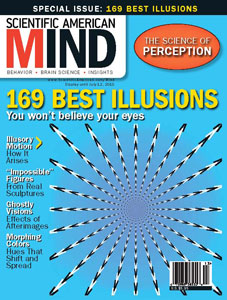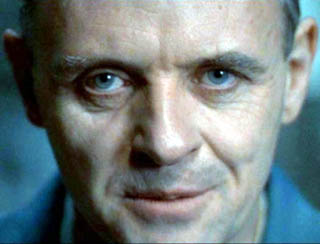neuroSCIence in FIction: Hannibal Lecter’s memory palace
“ Like Giotto, Dr. Lecter has frescoed the walls of his mind.”
― Thomas Harris, Hannibal
Yesterday we were talking about the memory palace of Tom Meseroll, the Master of Martial Magic, so it is fitting that this week’s Neuroscience in Fiction pick features a fictional memory palace: the mansion of reminiscence at the center of Hannibal Lecter’s brilliantly twisted mind.
The fragment that follows is from Thomas Harris’s Hannibal, where we learn all about Dr. Lecter’s unsavory past. The novel is not for everybody’s taste (pun intended), and I thought Red Dragon and The Silence of the Lambs were superior, but I did enjoy Harris’s lavish descriptions of Hannibal’s mnemonics:
The memory palace was a mnemonic system well known to ancient scholars and much information was preserved in them through the Dark Ages while Vandals burned the books. Like scholars before him, Dr. Lecter stores an enormous amount of information keyed to objects in his thousand rooms, but unlike the ancients, Dr.Lecter has a second purpose for his palace; sometimes he lives there. He has passed years among its exquisite collections, while his body lay bound on a violent ward with screams buzzing the steel bars like hell’s own harp.
Hannibal Lecter’s palace is vast, even by medieval standards. Translated to the tangible world it would rival the Topkapi Palace in Istanbul for size and complexity.
We catch up to him as the swift slippers of his mind pass from the foyer into the Great Hall of the Seasons. The palace is built according to the rules discovered by Simonides of Ceos and elaborated by Cicero four hundred years later; it is airy, high-ceilinged, furnished with objects and tableaux that are vivid, striking, sometimes shocking and absurd, and often beautiful. The displays are well spaced and well lighted like those of a great museum. But the walls are not the neutral colors of museum walls. Like Giotto, Dr. Lecter has frescoed the walls of his mind.
He has decided to pick up Clarice Starling’s home address while he is in the palace, but he is in no hurry for it, so he stops at the foot of a great staircase where the Riace bronzes stand. These great bronze warriors attributed to Phidias, rased from the seafloor in our own time, are the centerpiece of a frescoed space that could unspool all of Homer and Sophocles.
Dr. Lecter could have the bronze faces speak Meleager if he wished, but today he only wants to look at them.
A thousand rooms, miles of corridors, hundreds of facts attached to each object furnishing each room, a pleasant respite awaiting Dr. Lecter whenever he chooses to retire there.
Fearfully and wonderfully made, we follow as he moves with a swift stride along the corridor of his own making, through a scent of gardenias, the presence of great sculpture pressing on us, and the light of pictures.
His way leads around to the right past a bust of Pliny and up the staircase to the Hall of Addresses, a room lined with statuary and paintings in a fixed order, spaced wide apart and well lit, as Cicero recommends.
Ah… The third alcove from the door on the right is dominated by a painting of St. Francis feeding a moth to a starling. On the floor before the painting is this tableau, life-sized in painted marble.
A parade in Arlington National Cemetery led by Jesus, thirty three, driving a ’27 Model-T Ford truck, a “tin lizzie,” with J. Edgar Hoover standing in the truck bed wearing a tutu and waving to an unseen crowd. Marching behind him is Clarice Starling carring a .308 Enfield rifle at shoulder arms.
Check out Sleights of Mind for our thoughts on the intersection of magic and memory. We also recommend Moonwalking with Einstein, Joshua Foer’s account of becoming a memory champion through intensive training in mnemonic techniques, such as the memory palace (also known as the method of loci). Or read The Memory Palace of Matteo Ricci by Jonathan Spence, about the Italian Jesuit priest who taught this method to 16th century Confucian scholars in China.
-Susana Martinez-Conde







